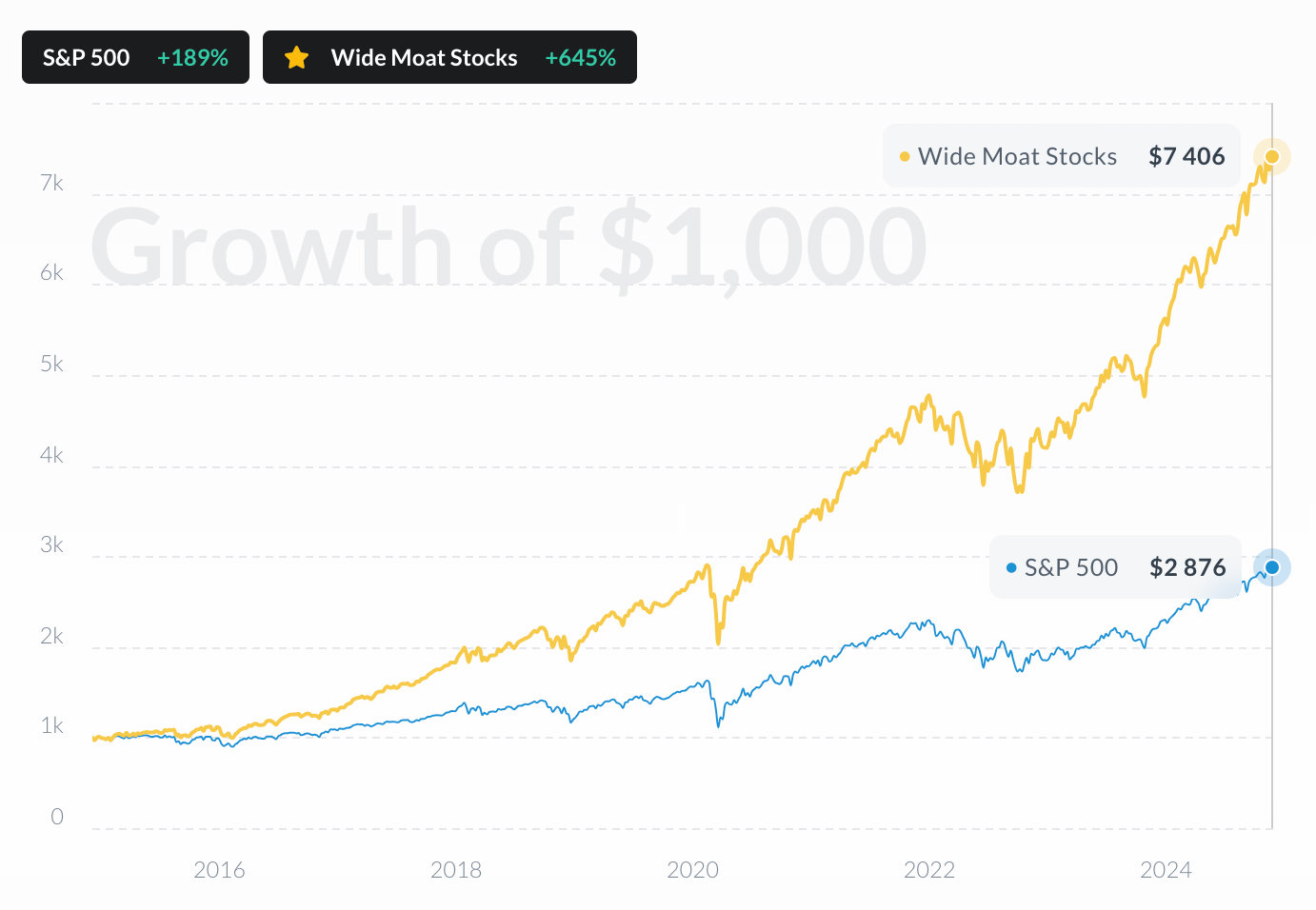
Westinghouse Air Brake Technologies Corp
NYSE:WAB


| US |

|
Johnson & Johnson
NYSE:JNJ
|
Pharmaceuticals
|
| US |

|
Berkshire Hathaway Inc
NYSE:BRK.A
|
Financial Services
|
| US |

|
Bank of America Corp
NYSE:BAC
|
Banking
|
| US |

|
Mastercard Inc
NYSE:MA
|
Technology
|
| US |

|
UnitedHealth Group Inc
NYSE:UNH
|
Health Care
|
| US |

|
Exxon Mobil Corp
NYSE:XOM
|
Energy
|
| US |

|
Pfizer Inc
NYSE:PFE
|
Pharmaceuticals
|
| US |

|
Palantir Technologies Inc
NYSE:PLTR
|
Technology
|
| US |

|
Nike Inc
NYSE:NKE
|
Textiles, Apparel & Luxury Goods
|
| US |

|
Visa Inc
NYSE:V
|
Technology
|
| CN |

|
Alibaba Group Holding Ltd
NYSE:BABA
|
Retail
|
| US |

|
3M Co
NYSE:MMM
|
Industrial Conglomerates
|
| US |

|
JPMorgan Chase & Co
NYSE:JPM
|
Banking
|
| US |

|
Coca-Cola Co
NYSE:KO
|
Beverages
|
| US |

|
Walmart Inc
NYSE:WMT
|
Retail
|
| US |

|
Verizon Communications Inc
NYSE:VZ
|
Telecommunication
|
Utilize notes to systematically review your investment decisions. By reflecting on past outcomes, you can discern effective strategies and identify those that underperformed. This continuous feedback loop enables you to adapt and refine your approach, optimizing for future success.
Each note serves as a learning point, offering insights into your decision-making processes. Over time, you'll accumulate a personalized database of knowledge, enhancing your ability to make informed decisions quickly and effectively.
With a comprehensive record of your investment history at your fingertips, you can compare current opportunities against past experiences. This not only bolsters your confidence but also ensures that each decision is grounded in a well-documented rationale.
Do you really want to delete this note?
This action cannot be undone.

| 52 Week Range |
125.2004
205.41
|
| Price Target |
|
We'll email you a reminder when the closing price reaches USD.
Choose the stock you wish to monitor with a price alert.

|
Johnson & Johnson
NYSE:JNJ
|
US |

|
Berkshire Hathaway Inc
NYSE:BRK.A
|
US |

|
Bank of America Corp
NYSE:BAC
|
US |

|
Mastercard Inc
NYSE:MA
|
US |

|
UnitedHealth Group Inc
NYSE:UNH
|
US |

|
Exxon Mobil Corp
NYSE:XOM
|
US |

|
Pfizer Inc
NYSE:PFE
|
US |

|
Palantir Technologies Inc
NYSE:PLTR
|
US |

|
Nike Inc
NYSE:NKE
|
US |

|
Visa Inc
NYSE:V
|
US |

|
Alibaba Group Holding Ltd
NYSE:BABA
|
CN |

|
3M Co
NYSE:MMM
|
US |

|
JPMorgan Chase & Co
NYSE:JPM
|
US |

|
Coca-Cola Co
NYSE:KO
|
US |

|
Walmart Inc
NYSE:WMT
|
US |

|
Verizon Communications Inc
NYSE:VZ
|
US |
This alert will be permanently deleted.
 Westinghouse Air Brake Technologies Corp
Westinghouse Air Brake Technologies Corp
 Westinghouse Air Brake Technologies Corp
Total Current Assets
Westinghouse Air Brake Technologies Corp
Total Current Assets
Westinghouse Air Brake Technologies Corp
Total Current Assets Peer Comparison
Competitors Analysis
Latest Figures & CAGR of Competitors

| Company | Total Current Assets | CAGR 3Y | CAGR 5Y | CAGR 10Y | ||
|---|---|---|---|---|---|---|

|
Westinghouse Air Brake Technologies Corp
NYSE:WAB
|
Total Current Assets
$4.8B
|
CAGR 3-Years
8%
|
CAGR 5-Years
2%
|
CAGR 10-Years
12%
|
|

|
Cummins Inc
NYSE:CMI
|
Total Current Assets
$15.3B
|
CAGR 3-Years
8%
|
CAGR 5-Years
8%
|
CAGR 10-Years
5%
|
|

|
Caterpillar Inc
NYSE:CAT
|
Total Current Assets
$44.9B
|
CAGR 3-Years
2%
|
CAGR 5-Years
3%
|
CAGR 10-Years
1%
|
|

|
Allison Transmission Holdings Inc
NYSE:ALSN
|
Total Current Assets
$1.6B
|
CAGR 3-Years
25%
|
CAGR 5-Years
16%
|
CAGR 10-Years
8%
|
|

|
Oshkosh Corp
NYSE:OSK
|
Total Current Assets
$5.1B
|
CAGR 3-Years
5%
|
CAGR 5-Years
8%
|
CAGR 10-Years
8%
|
|

|
Paccar Inc
NASDAQ:PCAR
|
Total Current Assets
$11.7B
|
CAGR 3-Years
23%
|
CAGR 5-Years
12%
|
CAGR 10-Years
11%
|
|
Westinghouse Air Brake Technologies Corp
Glance View
In the dynamic world of transportation and logistics, Westinghouse Air Brake Technologies Corporation, often recognized as Wabtec, stands as a formidable player. With its roots tracing back to the pioneering spirit of the Industrial Revolution, the company was founded by George Westinghouse in 1869. Established initially to enhance the safety and efficiency of rail systems, today Wabtec has evolved into a diversified global leader in rail and transit solutions. Its impressive portfolio comprises advanced freight car systems, locomotives, and digital electronics that enhance the functioning and safety of rail operations. The company leverages its vast engineering expertise to develop technologically sophisticated braking systems, air conditioning units, and energy-efficient power systems, which are crucial for modern rail infrastructure. These offerings help reduce operational costs for rail operators while improving their sustainability metrics—a pressing demand in contemporary logistics. Wabtec's revenue streams are intricately woven through various sectors within the railway industry. By focusing on innovation and technology-driven solutions, the company generates significant income through the manufacturing and sale of equipment, provision of maintenance services, and the offering of digital solutions such as data analytics and optimization software. A significant part of its income stems from long-term service agreements that ensure steady, recurring revenue. Additionally, its merger with GE Transportation broadened its horizons, enhancing its capabilities and expanding its footprint in international markets. Through strategic partnerships and a commitment to innovation, Wabtec not only capitalizes on growing rail industry demands but also positions itself as an essential contributor to global mobility solutions. Whether it’s supplying components for high-speed trains or integrating smart technologies, Wabtec continues to engineer its path towards sustainable and advanced transportation solutions.

See Also
What is Westinghouse Air Brake Technologies Corp's Total Current Assets?
Total Current Assets
4.8B
USD
Based on the financial report for Sep 30, 2024, Westinghouse Air Brake Technologies Corp's Total Current Assets amounts to 4.8B USD.
What is Westinghouse Air Brake Technologies Corp's Total Current Assets growth rate?
Total Current Assets CAGR 10Y
12%
Over the last year, the Total Current Assets growth was 3%. The average annual Total Current Assets growth rates for Westinghouse Air Brake Technologies Corp have been 8% over the past three years , 2% over the past five years , and 12% over the past ten years .






























 You don't have any saved screeners yet
You don't have any saved screeners yet